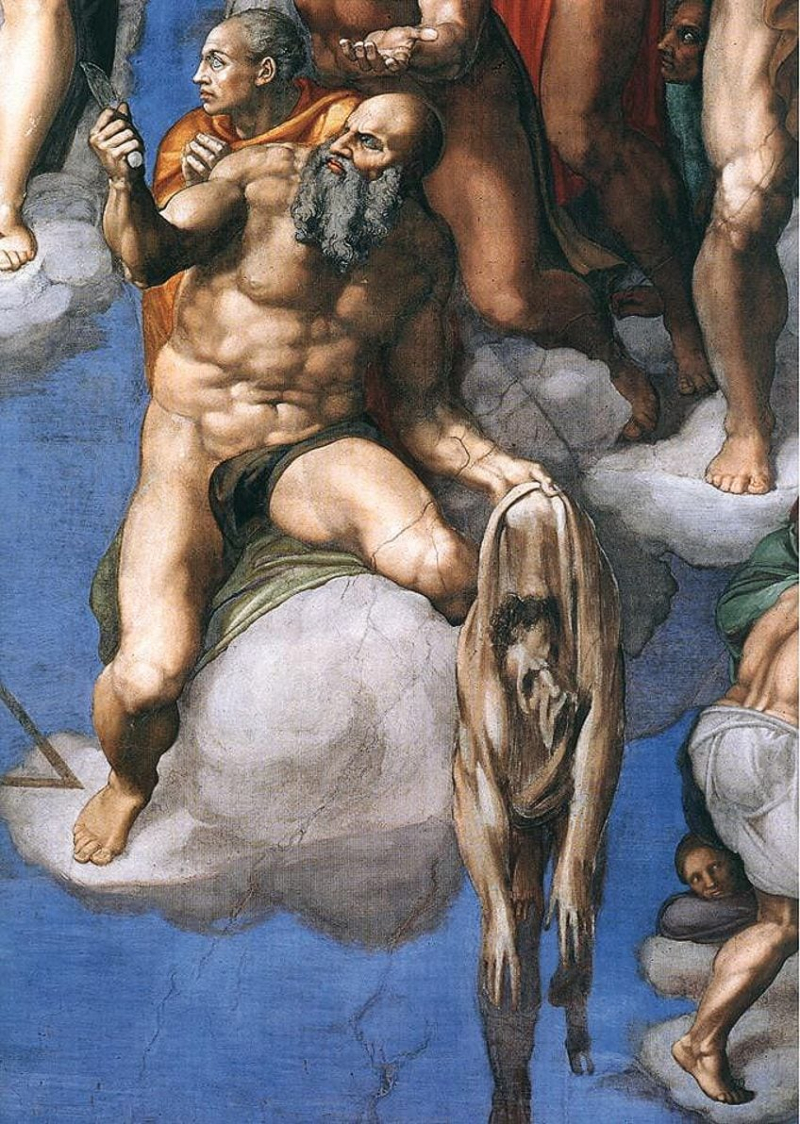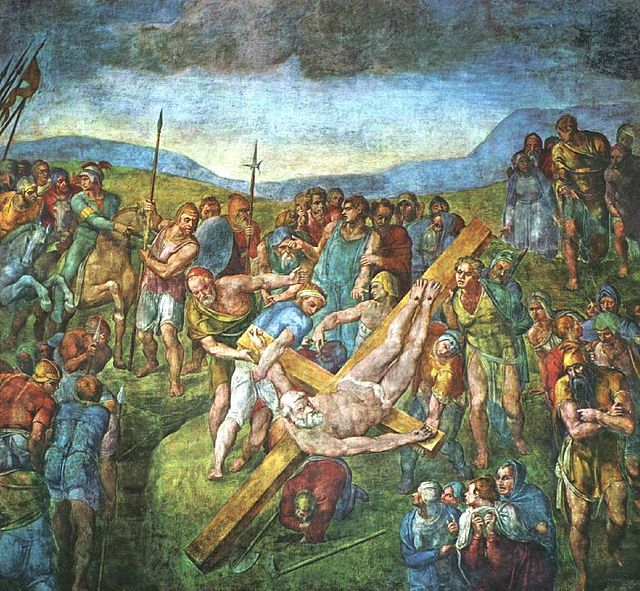He inserted his own likeness into some of his most famous works
Though he rarely signed his works and did not create formal self-portraits, Michelangelo occasionally buried stylized images of his face in his sculptures and paintings. He only signed his name on the Pietà. The Last Judgment fresco, which spans the full wall behind the altar of the Sistine Chapel, is one of the most well-known masterpieces into which he incorporated his likeness.
The most well-known of these covert self-portraits features St. Bartholomew holding what looks to be a piece of flayed skin with the artist's face on it. In his so-called Florentine Pieta, Michelangelo also painted himself as Saint Nicodemus, and art historians have speculated that he might be shown in a scenario with a multitude in his fresco "The Crucifixion of St. Peter."














